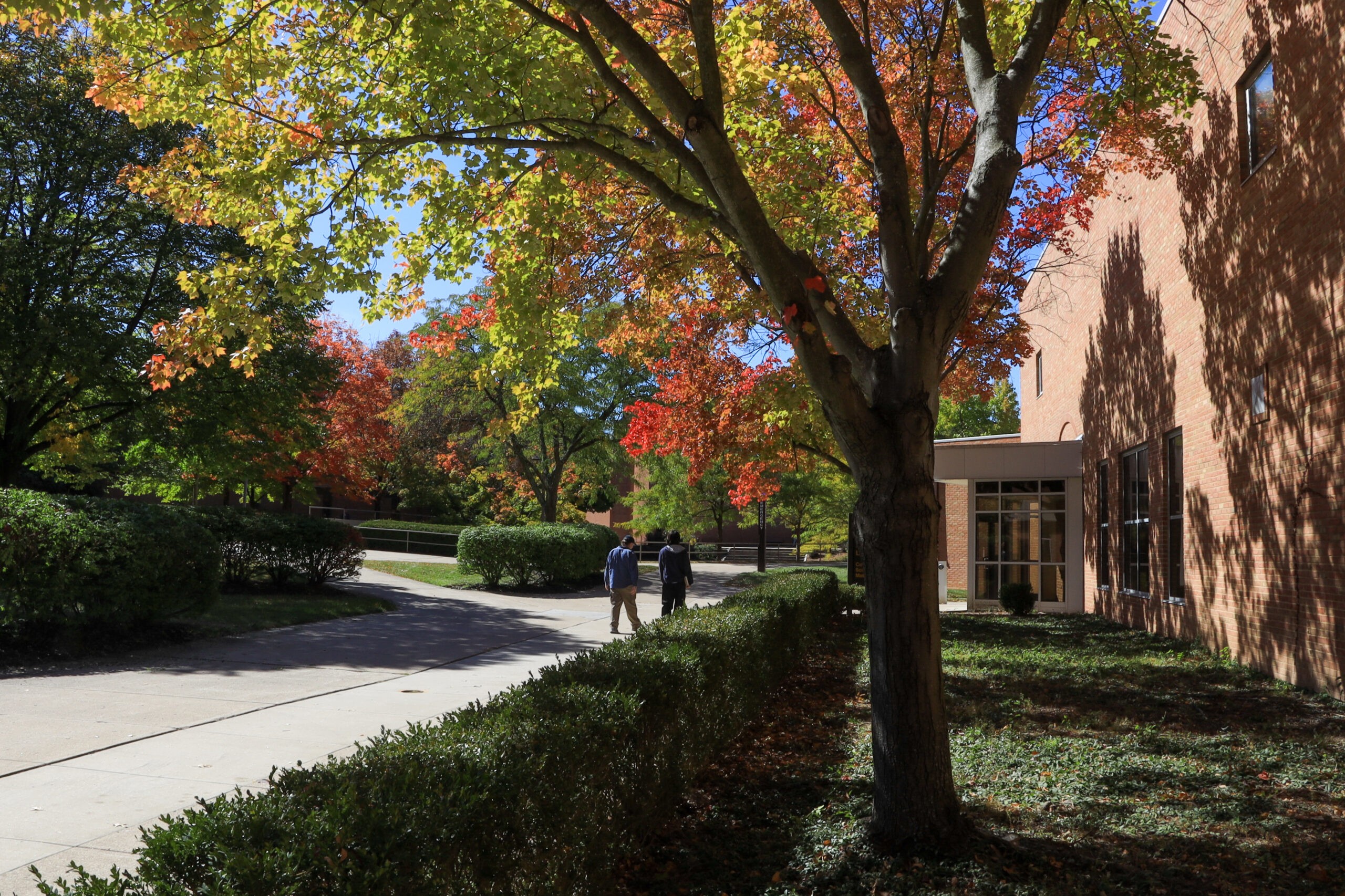
Students on Campus | Photo by Arden Reimer | The Wright State Guardian
On Nov. 14, members of the Indigenous American Culture Student Association educated the campus community about the rich history of multiple Native peoples as part of Native American Heritage Month.
Native American Heritage Month
According to the National Congress of American Indians, Native American Heritage Month is a time to commemorate the cultures and histories, alongside important contributions, of Native people.
In the spirit of this month, the IASCA has and will continue to conduct educational and fun events, including a Navajo rug presentation, LGBT-IACSA Film Fest and more.
The IASCA Lecture Series was the third of such events following the Commencement Busk on Nov. 3 and Corn Husk Dolls on Nov. 9.
The President of IACSA, Eliza Lazarus-War Lo Pe Hee Hendrix, elaborated on the importance of this month.
“We feel a responsibility to help fill in a lot of gaps people have when it comes to Indigenous Americans and who we are,” Hendrix said.
Lectures
Student Brad Kerry began with the history of the Chippawa trade system in the Great Lakes region, dispelling myths and educating on the advanced technology and knowledge that the Chippawa possessed.
“The Chippewa has a very advanced understanding of geometry, and with these canoes with their knowledge of navigation and knowledge of geometry, they were able to [create] these [hyper-accurate] maps,” Kerry said.
Kerry also spoke of the intricacies of Chippewa watercraft, territory, fur trade, agriculture and ore extraction.
Asian Student Association President Ryan Diaz presented on the Apache warrior Geronimo told through Geronimo’s own words interspersed with the history of the Apache, which sometimes differed from the historical record of this famous Native American.
In addition to Kerry’s dialogue, Diaz also dispelled common myths associated with Native people.
“Contrary to popular belief, [Geronimo’s] also a farmer. A lot of people don’t think of the Apache as farming people, and it’s worth mentioning that this farming is not the same as what you think of. This is subsistence farming,” Diaz said.
Diaz went on to describe the farming methods of the Apache, traditionally thought of as a “warrior tribe.”
Diaz used this history to provide context to the story of Geronimo. Diaz explained the murder of Geronimo’s family at the hands of Mexican settlers while also explaining Geronimo’s stay as a prisoner of war in Florida.
To conclude the lecture series, Hendrix presented on the Ancient Aliens Conspiracy, correcting the many falsehoods the television series spreads about Indigenous American civilization.
For more information and educational events from the IASCA, visit the organization’s Engage page.
